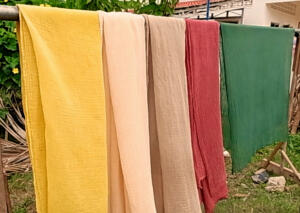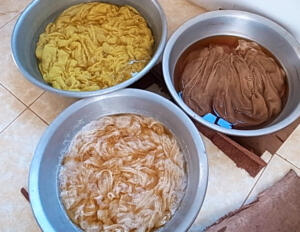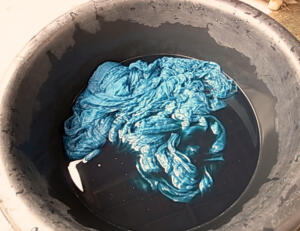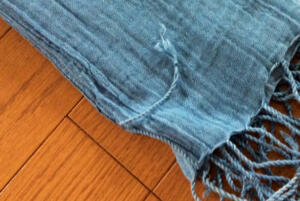



【The joys of natural dyeing②】
※ The image shows the process of natural dyeing and a prototype under trial and error.
Before this dyeing, I had dyed without pre-treating with soy milk, which resulted in a somewhat blurred color. The staff we asked to do the dyeing were students from a vocational training NGO who were learning skills to become independent after graduating from an orphanage at the age of 15, and they had never dyed cotton before.
One of them told us that, unlike silk, cotton fibers require the addition of protein to dye them, and he shared his dyeing expertise.
So I bought a lot of soybeans at the market and made soy milk in a large grinder. I soaked the cloth in soy milk, dried it in the sun, soaked it, dried it in the sun, and repeated the process three times, then let it sit in an airy place for a week before attempting this dye job.
The product will be soaked in a liquid such as sugarcane, turmeric, tamarind, or lac.
Indigo blue is not dyed dark enough, perhaps because it is dyed without fermentation. It turns out to be a pale baby blue rather than navy blue. This is a lovely color, but I am concerned about color fading (lack of color fastness) when washed, so I think some kind of post-treatment is necessary.
Although there are still many challenges, it is fun to dye cotton harvested in Battambang using rainwater (soft water) that comes down from the heavens, extracting color from the bark we receive from the forests of Battambang. Just looking at the cloth bathed in the sun and rustling in the wind is a peaceful experience.
( to be continued )
